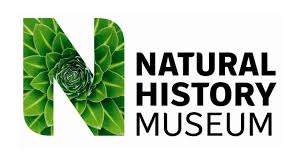 A noter / Autour de la Préhistoire
A noter / Autour de la Préhistoire 
Emplois, bourses, prix
2019
Natural History Museum (London) & University of York (BioArCh, Department of Archaeology)

This studentship, funded by the Calleva Foundation, will be jointly supervised by Professor Ian Barnes and Dr Silvia Bello at the Natural History Museum and Professor Oliver Craig at the University of York. The project is part of the Calleva 3 research programme initiated by Professor Chris Stringer, and is aligned with other NHM ancient human DNA projects being led by Dr Selina Brace. This is a three-year (full-time) project entitled "Magdalenian People: molecular and isotopic analysis of human remains from the end of the last ice age", to commence by 1st January 2020. The student will work between the Natural History Museum and the University of York.
Modern burial practices are extremely varied and closely associated with cultural identities. Cannibalism is usually considered to be a form of violence and, in extreme cases, survival in times of crisis, but it is rarely considered as an aspect of funerary rituals in past societies. However, our recent work on Magdalenian (~15,000 years old) human remains from Gough's Cave (Bello et al., 2011, 2015, 2016, 2017) provides compelling evidence for cannibalism as part of a complex, ritual behaviour during the Upper Palaeolithic. The question remains as to whether this was a phenomenon specific to Britain at that time, or a more widespread practice found throughout the Magdalenian world.
There are at least six Palaeolithic individuals from Gough's Cave represented in the NHM collection, and they are unusual not only in that they are among the only human remains from this period in the UK, but also because they show clear signs of being systematically butchered. Work on this assemblage will explore the basis of that behaviour, and investigate the relationships of the Gough's Cave Magdalenian people with each other and with populations in continental Europe of similar date (about 14-15,000 years ago). The collection contains a range of skeletal elements, including skull-cups, engraved bone, and heavily modified post-cranial remains. One further aim will be to establish whether these all belong to the same small number of individuals, or include curated remains brought from elsewhere. A second, comparative group of individuals can be found in the recently identified, butchered human remains from Bruniquel Cave, which were purchased by the British Museum in the mid-1800s. The extent and manner in which these bones have been modified by butchery practices is still unclear, as is their exact date, and their cultural and genetic relationship with the Gough's Cave individuals.
This project will use facilities and expertise at York and the NHM to conduct ancient DNA, radiocarbon, isotopic and taphonomic analyses in order to address a range of questions about the origin and nature of these exceptional archaeological assemblages.
Application deadline: 11th October 2019
Vu sur Mesolithic Miscellany Monthly - september 2019
#JobArchéo


